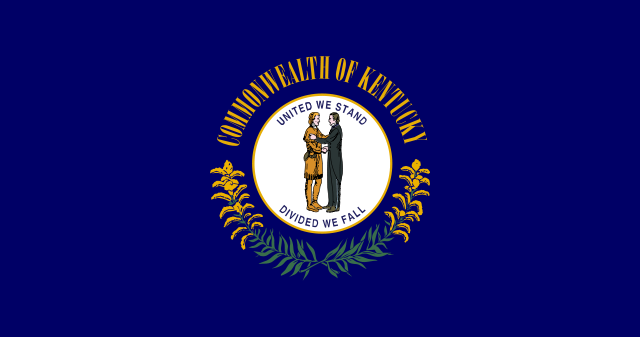
Leo Kolivakis is a blogger, trader and independent senior pension and investment analyst. This post was originally published at Pension Pulse.
Robin Harding of the Financial Times reports, Japan’s pension fund loses $64bn in third quarter:
The world’s biggest pension fund suffered a grim third quarter, losing $64bn — or 5.6 per cent of its value — as global stock markets fell.
Although much of the loss was likely regained as markets rallied in October, it is a reminder of the risks Japan’s Government Pension Investment Fund is taking after ramping up its equity exposure.
Results from the $1.1tn GPIF are likely to show increased volatility in the future after it changed its target portfolio to 50 per cent equity last year to boost returns and help service Japan’s rising pension bill.
“The volatility of short-term profits may have increased, but from a long-term perspective the risk of a shortfall in pension assets has decreased,” said Yoshihide Suga, the government’s chief cabinet secretary.
Most of the losses came from its holdings of domestic and international equities, which were down 12.8 and 11 per cent respectively, while domestic bonds generated a modest profit.
The losses were almost identical to the GPIF’s benchmark indices for those assets. Since the end of the third quarter, Japan’s Topix stock market index has rallied by almost 12 per cent to close at 1,580 on Monday.
Periods of loss are fairly common for the GPIF, which recorded annual declines in 2007, 2008 and 2010, but they are politically sensitive in Japan because the fund’s assets back basic pensions for most of the population.
It comes after a period of spectacular performance for the GPIF, which returned more than 12 per cent in 2014 as the yen weakened and the Japanese stock market rallied.
The results show the GPIF has largely completed its shift into equities. Equity holdings were towards the bottom of its target range, but that likely reflects the weakness of stock prices at the end of the quarter.
Its attempts to put cash into private equity and alternative investments remain painfully slow, however, with a portfolio allocation of just 0.05 per cent at the end of the quarter. That is equivalent to just $550m.
Japan is unusual in having accumulated assets to support part of its public pension system. The reallocation towards riskier securities is one of prime minister Shinzo Abe’s reforms, aimed at paying the pension bill of the world’s most elderly population, and thus relieving pressure on the public budget.
Political analysts say it has had the dual benefit of boosting the stock market, however, allowing Mr Abe to claim results for his economic programme. A series of smaller public pension funds are in the process of mirroring the GPIF’s asset shift.
Anna Kitannaka of Bloomberg also reports,Japan’s Pension Whale Stands by Stocks After $64 Billion Loss:
Japan’s giant pension manager is unrepentant after a push into equities saw the fund post its worst quarterly result since at least 2008.
There’s no reason to doubt the 135.1 trillion yen ($1.1 trillion) Government Pension Investment Fund’s investment strategy, officials said on Monday in Tokyo as they unveiled a 7.9 trillion yen loss for the three months through September. The slump was GPIF’s first negative return after revamping allocations last October, when it doubled holdings of Japanese and foreign shares.
The loss will test the resolve of the fund’s stewards and of Prime Minister Shinzo Abe, who called for the shift out of bonds to riskier assets such as equities as the government tries to spur inflation. Sumitomo Mitsui Trust Bank Ltd. and Saison Asset Management Co. say that while the public may question the safety of their pension savings, GPIF should be judged on how it meets the retirement needs of the world’s oldest population over a longer horizon.
“They will see some criticism for this. But that’s more of an issue of financial literacy,” said Ayako Sera, a market strategist at Sumitomo Mitsui Trust in Tokyo. “The liabilities of public pensions have an extremely long duration, so it’s best not to carve it up into three-month periods. However, from a long-term perspective, it’s necessary to continue monitoring whether the timing of last year’s allocation was good or not.”
The fund shifted the bulk of its holdings at a “terrible” time, just as stocks peaked, Sera said.
GPIF lost 5.6 percent last quarter as China’s yuan devaluation and concern about the potential impact if the Federal Reserve raises interest rates roiled global equity markets. That’s the biggest drop in comparable data starting from April 2008. The pension manager’s Japan equity investments slid 13 percent, the same retreat posted by the Topix index, and foreign stock holdings fell 11 percent. The fund lost 241 billion yen on overseas debt, while Japanese bonds handed it a 302 billion yen gain.
GPIF is likely to have purchased 400 billion yen of Japanese stocks and 1.7 trillion yen in foreign equities during the July-September quarter after its exposure to the asset class declined following the rout, according to Nomura Holdings Inc.
Equity Rebound
Things are looking up. The Topix rallied 14 percent since the start of the fourth quarter, while a gauge of global shares gained about 7.1 percent. As of Sept. 30, GPIF had 43 percent of its assets in equities around the world.
The asset manager “seriously considered” whether to continue with its current investment mix before deciding it’s the right approach, Hiroyuki Mitsuishi, a GPIF councilor, said on Monday. Short-term returns are more volatile these days, but there’s less risk that GPIF will fail on its long-term objective of covering pension payouts, he said. Fund executives have argued that holding more shares and foreign assets will lead to higher returns as Abe’s inflation push risks eroding the purchasing power of bonds.
“Short-term market moves lead to gains and losses, but over the 14 years since we started investing, the overall trend is upwards,” Mitsuishi said. “Don’t evaluate the results over the short term, as looking over the long term is important.”
Currency Loss
A stronger yen contributed to GPIF’s quarterly loss, with the currency gaining 2.2 percent against the U.S. dollar in the quarter.
GPIF has started to hedge some of its investments against fluctuations in the euro, which it sees declining in the short term on expectations for further central bank easing, the Wall Street Journal reported Tuesday. The fund is in a position to use hedges at any time, Mitsuishi said in response to the report, while declining to comment on whether it had.
GPIF hadn’t posted a quarterly loss since the three months through March 2014. The most recent results included returns from a portfolio of government bonds issued to finance a fiscal investment and loan program, with GPIF providing such figures since 2008. If those are stripped out, the drop was the fund’s third-worst on record, exceeded only by declines in the depths of the 2008 global financial crisis and the aftermath of the Sept. 11, 2001 terror attacks.
“They changed their portfolio knowing something like this could happen, and they’re not going to change their investment policy because of this,” said Tomohisa Fujiki, the head of interest-rate strategy for Japan at BNP Paribas SA in Tokyo. “They reduced domestic bonds and increased risk assets such as stocks, so temporary losses can’t be helped when there’s chaos in the market like in August and September.”
Public Relations
For Tetsuo Seshimo, a fund manager at Saison Asset Management in Tokyo, GPIF gets a pass on its performance given it was in line with benchmark indexes, and a failing grade on its public-relations strategy.
“If you have half your portfolio in stocks, this kind of thing can easily happen,” he said. “However, the public will probably be surprised. The issue is whether they have explained this properly — they haven’t.”
GPIF knows it needs to convince the public that it’s doing the right thing. It unveiled a new YouTube channel on Monday, which will have videos of its press conferences.
“People are probably very interested in GPIF’s results,” said Mitsuishi. “We want to directly explain to them that a long-term view is important.”
For those of you who speak Japanese, you can access GPIF’s YouTube channel here. It’s probably a good idea to have better communication for the sake of Japanese citizens who are worried about their pensions but GPIF should also post clips in English given it is the biggest pension fund in the world.
So, what do I think of GPIF’s record loss in Q3? It’s ugly but not unexpected given it’s shifting assets away from bonds to equities which are much more volatile, especially in a world of record low interest rates, QE, and high frequency trading platforms. Add to this currency losses from a stronger yen and you quickly understand why GPIF lost a staggering $64 billion in Q3.
Interestingly, Eleanor Warnock of the Wall Street Journal reports that Japan’s pension fund is starting to hedge against currency moves:
Japan’s ¥135 trillion ($1.1 trillion) public pension fund has started to hedge a small amount of its investments against currency fluctuations, according to people familiar with the matter.
Japan’s Government Pension Investment Fund started to hedge against fluctuations in the euro in the “short term” due to a negative outlook for the currency amid expectations for further easing by the European Central Bank, the people said.
The fund previously didn’t hedge any of its roughly ¥50 trillion in assets denominated in foreign currencies. A GPIF official declined to comment on whether the GPIF currently was using currency hedging or not, but said that the fund was ready to use currency hedging if deemed necessary.
The decision shows the GPIF becoming shrewder about selectively disclosing information about its investment strategy and also in trying new ways for managing risk on its massive portfolio. Concern about market impact made the fund reluctant to try such tools in the past.
The GPIF used a strategy involving a “tailor-made benchmark” to “quietly hedge” and not attract market attention, said one person with knowledge of the matter.
A rise in volatility in global financial markets has pushed some institutional investors to adopt hedging strategies. Norway’s sovereign wealth fund started hedging equity holdings against currency risk earlier this year, citing a rise in currency market volatility. In the U.S., the U.S. dollar’s gains have pushed more pension funds to adopt hedging strategies in the past year.
A strengthening of the yen helped amplify losses to the GPIF’s portfolio in the July-September quarter. The fund posted its worst performance in the quarter since 2008, as holdings fell 5.59%.
Some large pension funds and sovereign wealth funds around the world don’t hedge their currency exposure, which involves taking positions that would at least partially offset declines in the value of the currencies in which investments are held. Some investment officers believe the effects of currency movements even out over time due to their long investment time frames.
Though the GPIF’s mission is to achieve enough returns to fund pension payouts for the next 100 years, the fund usually reviews its portfolio every five years, and releases quarterly updates on performance.
Hedging could potentially allow the GPIF to soften large fluctuations in quarterly performance. A hedging strategy would also make it harder for hedge funds and other investors to analyze the impact of GPIF’s activity on foreign currency markets.
It’s true, some large pension funds and sovereign wealth funds don’t hedge their currency exposure. Case in point? The Canada Pension Plan Investment Board (CPPIB) which gained a record 18.3% in FY 2015. The value of its investments got a $7.8-billion boost in fiscal 2015 from a decline in the Canadian dollar against certain currencies, including the U.S. dollar and U.K. pound.
By contrast, PSP Investments is 50% hedged in currencies which explains part of its underperformance relative to CPPIB in fiscal 2015. Still, PSP delivered solid results, gaining 14.5% in fiscal 2015.
Of course, relative to GPIF and the Norwegian Pension Fund which is betting on reflation, CPPIB and PSP are peanuts. Interestingly, I would advise GPIF not to follow the Norway’s pension fund and finance real estate investments by selling Japanese bonds (GJBs). I’m increasingly worried about global deflation and for the life of me, I can’t understand why any of these mammoth funds who sell bonds to invest in real estate (at the top of the market).
Also, if they have to diversify out of stocks and bonds, why not take advantage of record low rates to borrow to fund these investments? Are they worried about the Fed preparing to hike rates in December? I wouldn’t worry about that, if the Fed starts hiking, it will exacerbate deflationary pressures and ensure more QE and lower rates for a very long time. Maybe that’s why some of Canada’s large pensions are leveraged to the hilt (the others wish they can but by law, they can’t).
Japan knows all about deflation. Bank of Japan Governor Haruhiko Kuroda has dismissed calls from critics to go slow on hitting the central bank’s 2 percent inflation target and stressed the need to take “whatever steps necessary” to achieve its ambitious consumer price goal. On Monday, he reinforced the need to reinflate prices as a central bank priority:
“If the BOJ were to move slowly toward achieving the price target, wage adjustments would also be slow,” Kuroda told business leaders in the central Japan city of Nagoya, home to auto giant Toyota Motor Corp.
“In order to overcome deflation — in other words, break the deadlock — somebody has to show an unwavering resolve and change the situation. When price developments are at stake, the BOJ must be the first to move.”
Japan relapsed into recession in July-September as slow wage growth and China’s slowdown hurt consumption and exports.
Consumer prices have also kept sliding due largely to the effect of falling energy costs, keeping the BOJ under pressure to expand its massive stimulus programme to meet its pledge of accelerating inflation to 2 percent by around early 2017.
Kuroda said the recent weakness in exports and output was unlikely to hurt companies’ investment appetite for now, as robust domestic demand has made the economy resilient to external shocks.
But he warned that the slowdown in emerging markets, if prolonged, could hurt business sentiment and discourage companies from boosting capital expenditure.
“We’ll ease policy or take whatever steps necessary without hesitation if an early achievement of our price target becomes difficult,” he told a news conference later on Monday.
The BOJ has recently joined government calls for firms to use their huge cash-pile to boost wages and investment, so far with limited success.
While the BOJ cannot directly influence wages, it can help push them up by reinforcing its commitment to achieve its price target, Kuroda said.
“If Japan were to emerge from deflation and see inflation hit 2 percent, it’s important that companies start preparing for that moment by investing more on human resources and capital expenditure,” he said.
He also said that while monetary policy does not directly target currency rates, the BOJ will closely monitor yen moves because of their big impact on Japan’s economy.
“What’s most desirable is for exchange rates to move stably reflecting economic and financial fundamentals,” Kuroda told business leaders.
Interestingly and quite worryingly, Japan’s central bank now owns more than half of the nation’s market for exchange-traded stock funds, and that might just be the start:
Policy makers weighing a deeper foray into equities shows how the world’s third-biggest stock market has become one of the most important Abenomics battlegrounds. The Topix index is up 21 percent since the central bank unexpectedly tripled its ETF budget almost a year ago, and Citigroup Global Markets Japan Inc.’s Tsutomu Fujita says there’s room for them to triple it again. For Amundi Japan Ltd., expanding the program would do more harm than good.
“At a fundamental level, I don’t support the idea of central banks buying ETFs or equities,” said Masaru Hamasaki, head of the investment information department at Amundi Japan. “Unlike bonds, equities never redeem. That means they will have to be sold at some point, which creates market risk.”
These desperate actions of the BoJ to slay Japan’s deflation dragon are another example of central banks trying to save the world. Will they succeed and bring about inflation? That’s what some elite funds preparing for reflation think but global bond markets are yawning and the crash in oil, gold and commodity prices certainly doesn’t bolster the case for massive inflation ahead.
So, Japan’s prime minister Shinzo Abe is taking advice from George Soros, cranking up the risk at public pensions and encouraging Japan’s central bank to do the same. So far, it’s been a losing battle and my fear is that all this government intervention will end up exacerbating Japan’s deflation and ensure the same outcome in China.
George Soros isn’t stupid. He sees the writing on the wall and I’m betting that he and his protege are taking the opposite side of the global reflation bet (I’m willing to bet the same thing for Chris Rokos who just started his global macro fund).
All this to say that losing $64 billion in one quarter isn’t a disaster for Japan’s pension whale. It got harpooned but it’s not a mortal wound. However, if my prediction of a prolonged period of global deflation comes true, Japan, Norway and all global pension and sovereign wealth funds betting on reflation are going to get decimated.
In fact, a new report by the OECD states that pension systems remain under strain in many countries amid slow economic growth and moves by governments to shore up financial stability in the wake of the global financial crisis.
Wait till the great experiment Shinzo Abe and central banks around the world adopted fails spectacularly, then you will see global pensions reeling. Enjoy the global liquidity tsunami while it lasts because when the tide goes out, deflation is going to expose a lot of naked swimmers and wreak havoc on pensions for a very long time.
Photo by Ville Miettinen via Flickr CC License













